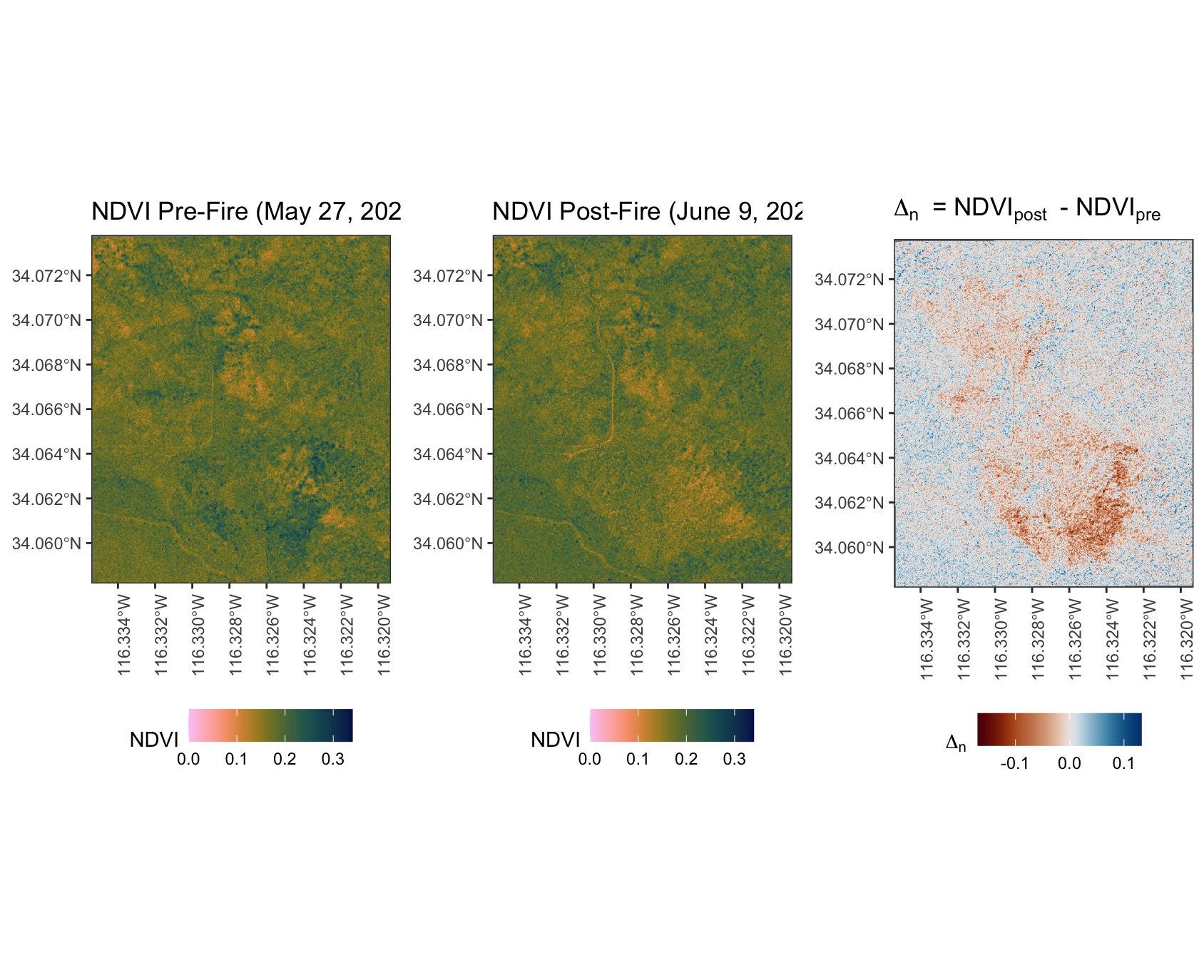Hi everyone,
I recently worked with Planet data for the first time. I downloaded two PlanetScope images from the Planetary Explorer (RGB-IR reflectance and I also chose the option to harmonize images with Sentinel-2)
I then calculated NDVI for both images and then the average. I am very surprised by the averages I find. In the center of the image a fire happened in between the two dates so I would expect NDVI to decrease (makes sense). However, I am suspicions of the increases in NDVI I see in other areas, that seem to be the same order of magnitude. While this could be an artifact of NDVI just being quite low in general, I was still wondering if there is an issue with comparing data across difference images taken by different satellites?

Here is the code I used to process the data (in R):
library(tidyverse)
library(sf)
library(terra)
library(tidyterra)
NDVI = function(raster) {
ndvi_r = (raster[[4]] - raster[[3]]) / (raster[[4]] + raster[[3]])
return(ndvi_r)
}
raster_prefire = terra::rast('2025-05-27_strip_8094341_composite_file_format.tif')
raster_postfire = terra::rast('2025-06-09_strip_8121430_composite_file_format.tif')
NDVI_prefire = NDVI(raster_prefire)
NDVI_postfire = NDVI(raster_postfire)
NDndvi = (NDVI_postfire - NDVI_prefire)






